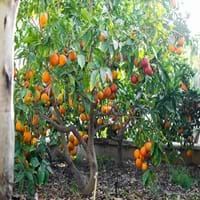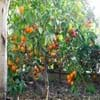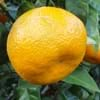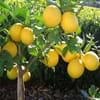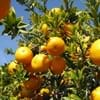Life Span
Perennial
Perennial
Type
Fruit
Flowering Plants
Origin
Southeastern Asia, China
Italy, Southern Europe, western Balkans
Types
Tarocco, Sanguinello,
Moro
not available
Habitat
Sunny Edge, Woodland Garden
Islands, Not Available
USDA Hardiness Zone
9-11
7-10
Sunset Zone
H1, H2, 8, 9, 12, 13, 14, 15, 16, 17, 18, 19, 20, 21, 22, 23, 24
21,22
Habit
Oval or Rounded
Upright/Erect
Flower Color
White
Lavender, Light Blue, White
Flower Color Modifier
Bicolor
Bicolor
Fruit Color
Orange, Orange Red
Non Fruiting Plant
Leaf Color in Spring
Dark Green
Green, Light Green
Leaf Color in Summer
Dark Green
Green, Light Green
Leaf Color in Fall
Dark Green
Green, Light Green
Leaf Color in Winter
Light Green
Light Green
Leaf Shape
Ovate
Compound
Plant Season
Spring, Summer, Fall, Winter
Summer, Fall
Sunlight
Full Sun
Full Sun, Partial Sun
Growth Rate
Medium
Medium
The pH of Soil
Acidic, Neutral
Acidic, Neutral
Soil Drainage
Well drained
Average
Bloom Time
Spring, Late Winter, Indeterminate
Early Summer, Summer, Late Summer
Tolerances
Drought
Heat Tolerance
Where to Plant?
Ground
Ground, Pot
How to Plant?
Seedlings, Semi-ripe cuttings
From bulbs, Seedlings, Stem Planting
Plant Maintenance
Medium
Low
Watering Requirements
Do Not over Water, Keep the ground moist but not water-logged, Needs watering once a week
Average Water Needs, Do Not over Water, Never Over-water, Requires regular watering
In Summer
Lots of watering
Lots of watering
In Spring
Moderate
Moderate
In Winter
Average Water
Average Water
Soil pH
Acidic, Neutral
Acidic, Neutral
Soil Drainage Capacity
Well drained
Average
Sun Exposure
Full Sun
Full Sun, Partial Sun
Pruning
Pinch Tips, Remove branches, Remove damaged fruit, Remove damaged leaves, Remove dead branches, Remove dead leaves
Remove damaged leaves, Remove dead branches, Remove dead leaves, Remove dead or diseased plant parts
Fertilizers
All-Purpose Liquid Fertilizer, organic fertlizers
fertilize every 2-3 weeks while growing, fertilize in growing season
Pests and Diseases
Red blotch
fungus
Plant Tolerance
Drought
Drought, Heat Tolerance
Flower Petal Number
Single
Single
Showy Foliage
No
Not Available
Foliage Texture
Medium
Not Available
Foliage Sheen
Glossy
Not Available
Attracts
Birds, Butterflies
Birds, Insects
Aesthetic Uses
Not Used For Aesthetic Purpose
Beautification, Landscape Designing, Showy Purposes
Beauty Benefits
Good for skin
Not Available
Environmental Uses
Air purification, Indoor Air Purification
Air purification
Medicinal Uses
Appetizer, Blood purifier, Carminative, Miscellany, Tonic
Asthma, Cough, Unknown
Part of Plant Used
Flowers, Fruits
Flowers, Leaves
Other Uses
Used as essential oil
Decoration Purposes, Showy Purposes, Used as Ornamental plant
Used As Indoor Plant
Yes
Yes
Used As Outdoor Plant
Yes
Yes
Garden Design
Container, Edible, Feature Plant, Fruit / Fruit Tree, Hedges, Mixed Border, Screening / Wind Break, Topiary / Bonsai / Espalier, Tropical
Mixed Border, Wildflower
Botanical Name
CITRUS sinensis
CAMPANULA pyramidalis
Common Name
Blood Orange, Naval Orange, Orange, Sweet Orange
Chimney Bellflower
In Hindi
Blood Orange Tree
Chimney Bellflower
In German
Blut- Orange Tree
Schornstein Glockenblume
In French
Sang Orange Tree
cheminée Bellflower
In Spanish
Árbol de la naranja de sangre
Chimenea Bellflower
In Greek
Blood Orange Tree
καμινάδα καμπανούλα
In Portuguese
Orange Tree sangue
chaminé Bellflower
In Polish
Krew Orange Tree
komin Bellflower
In Latin
Sanguinem Aliquam ligno
caminorum purgatores Bellflower
Phylum
Magnoliophyta
Tracheophyta
Class
Magnoliopsida
Magnoliopsida
Order
Sapindales
Asterales
Family
Rutaceae
Campanulaceae
Clade
Angiosperms, Eudicots, Rosids
Angiosperms, Asterids, Eudicots
Tribe
Citreae
Not Available
Subfamily
Aurantioideae
Not Available
Number of Species
Not Available
Not Available
Season and Care of Blood Orange and Chimney Bellflower
Season and care of Blood Orange and Chimney Bellflower is important to know. While considering everything about Blood Orange and Chimney Bellflower Care, growing season is an essential factor. Blood Orange season is Spring, Summer, Fall and Winter and Chimney Bellflower season is Spring, Summer, Fall and Winter. The type of soil for Blood Orange is Loam and for Chimney Bellflower is Loam while the PH of soil for Blood Orange is Acidic, Neutral and for Chimney Bellflower is Acidic, Neutral.
Blood Orange and Chimney Bellflower Physical Information
Blood Orange and Chimney Bellflower physical information is very important for comparison. Blood Orange height is 457.20 cm and width 365.76 cm whereas Chimney Bellflower height is 120.00 cm and width 45.70 cm. The color specification of Blood Orange and Chimney Bellflower are as follows:
Blood Orange flower color: White
Blood Orange leaf color: Dark Green
Chimney Bellflower flower color: Lavender, Light Blue and White
- Chimney Bellflower leaf color: Green and Light Green
Care of Blood Orange and Chimney Bellflower
Care of Blood Orange and Chimney Bellflower include pruning, fertilizers, watering etc. Blood Orange pruning is done Pinch Tips, Remove branches, Remove damaged fruit, Remove damaged leaves, Remove dead branches and Remove dead leaves and Chimney Bellflower pruning is done Remove damaged leaves, Remove dead branches, Remove dead leaves and Remove dead or diseased plant parts. In summer Blood Orange needs Lots of watering and in winter, it needs Average Water. Whereas, in summer Chimney Bellflower needs Lots of watering and in winter, it needs Average Water.
